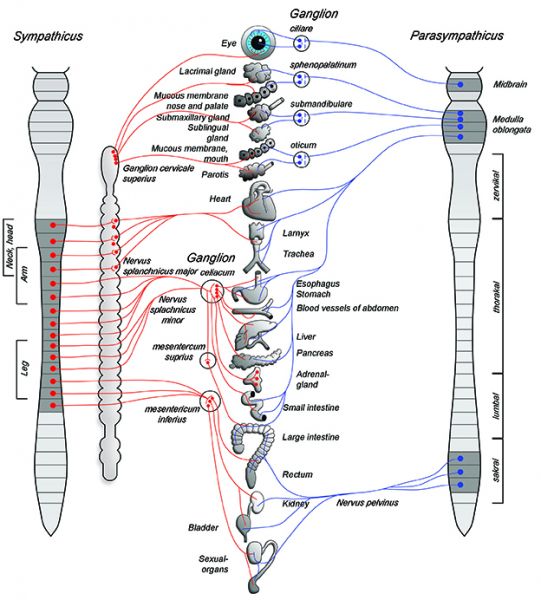Basics – Autonomic Nervous System (ANS)
Regulation and function: The autonomic nervous system is the top-level control centre that regulates all vital functions

The autonomic nervous system governs all life-giving functions, such as breathing, heart rate, blood pressure, energy production, digestion and metabolism. It is made up of the sympathetic (tension) and the parasympathetic (relaxation) nervous system. These two systems are antagonistic, meaning that they work contrary to one another.
When a person is confronted with a dangerous situation, thus triggering the instinct to flee, the sympathetic system (designed for stress) becomes much more active than the parasympathetic system (relaxed nerves).
The following reactions are observed in the body:
- The heart will pump faster
- Oxygen supply is increased
- Attention and concentration are heightened
- The body and the mind are in a state of alert
- The pupils dilate
- Blood pressure rises
- Stress hormones, such as adrenaline, are released
Under such conditions, the body can perform at much higher level.
More information about the autonomic nervous system ANS you can find here (external link): ANS basics
